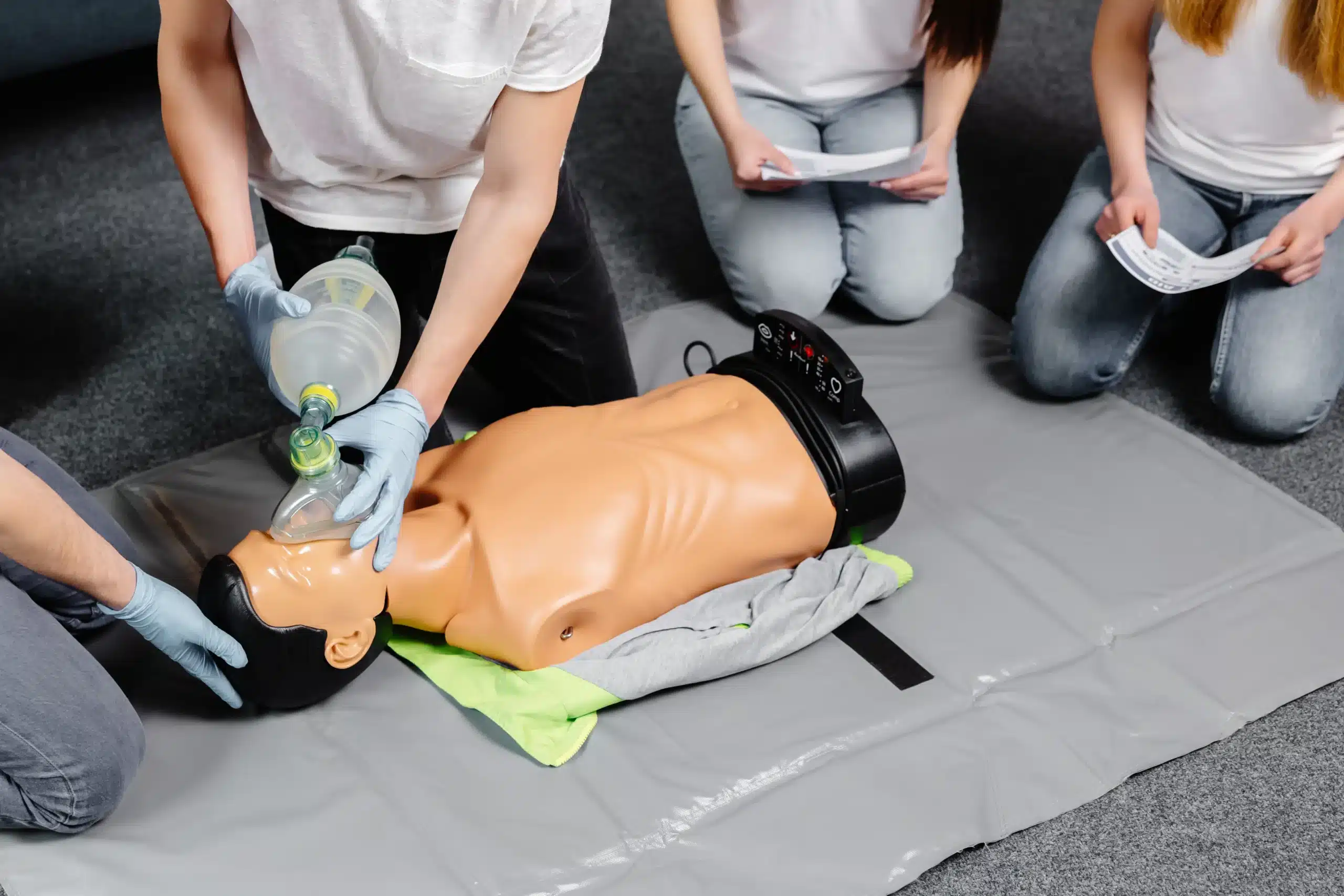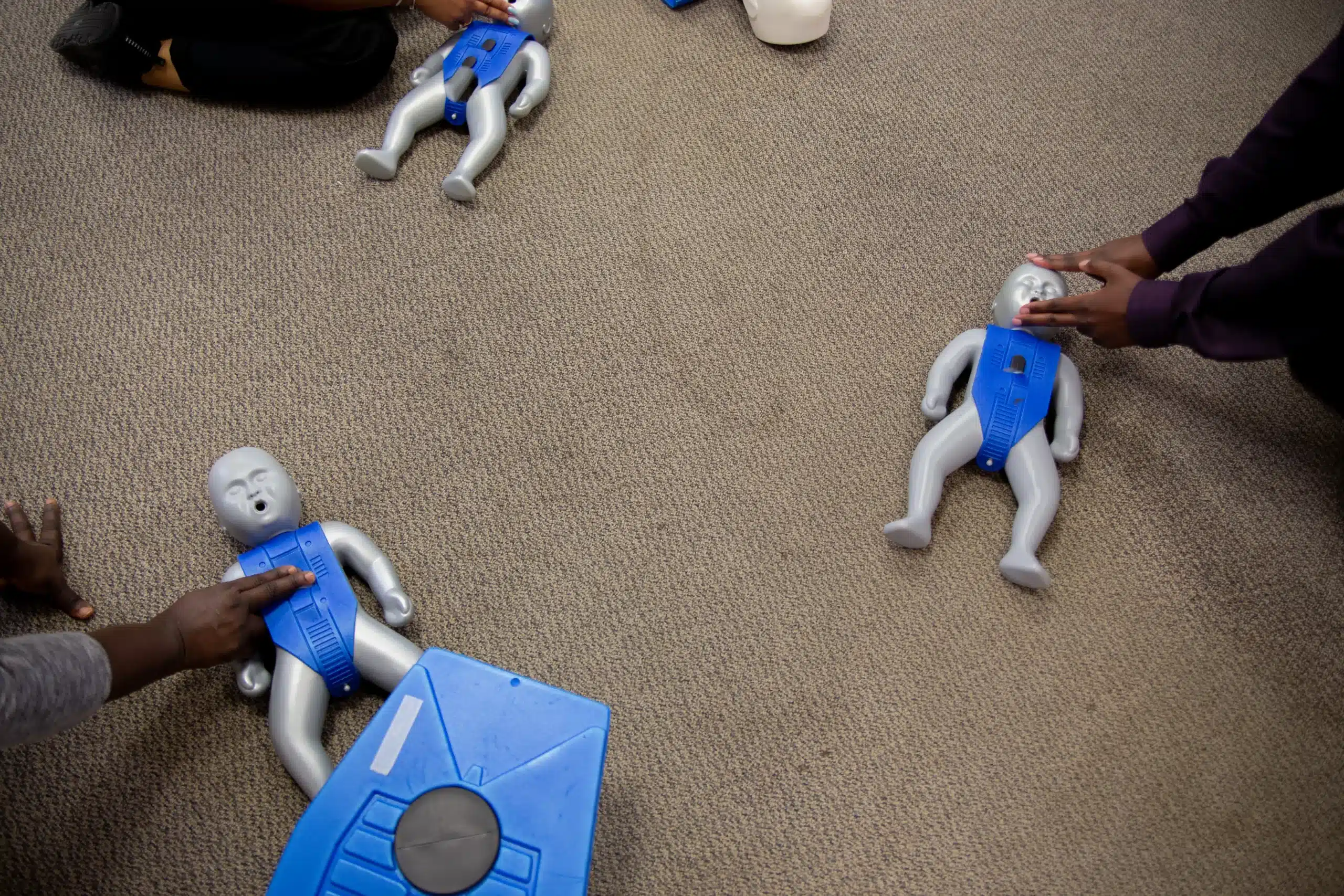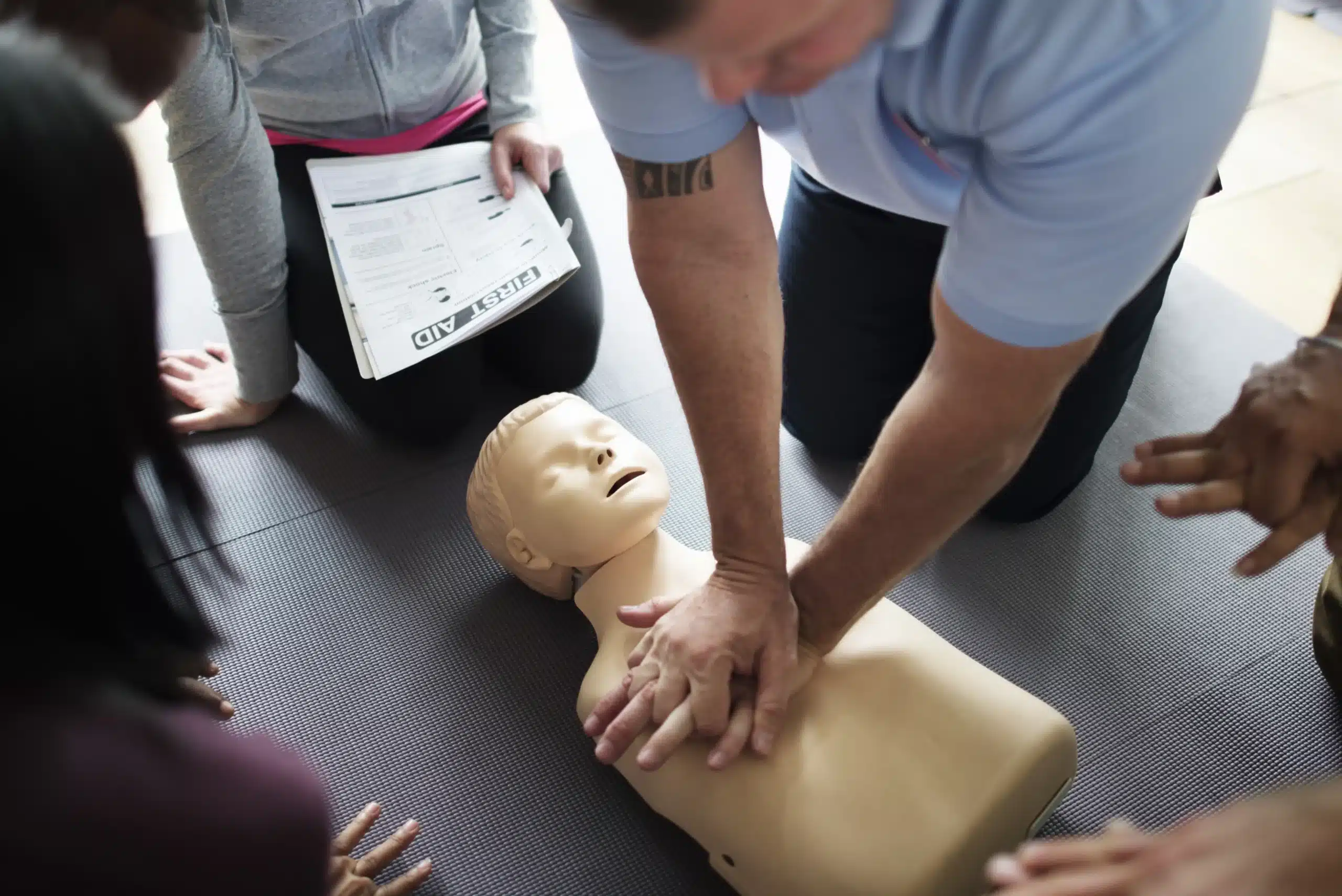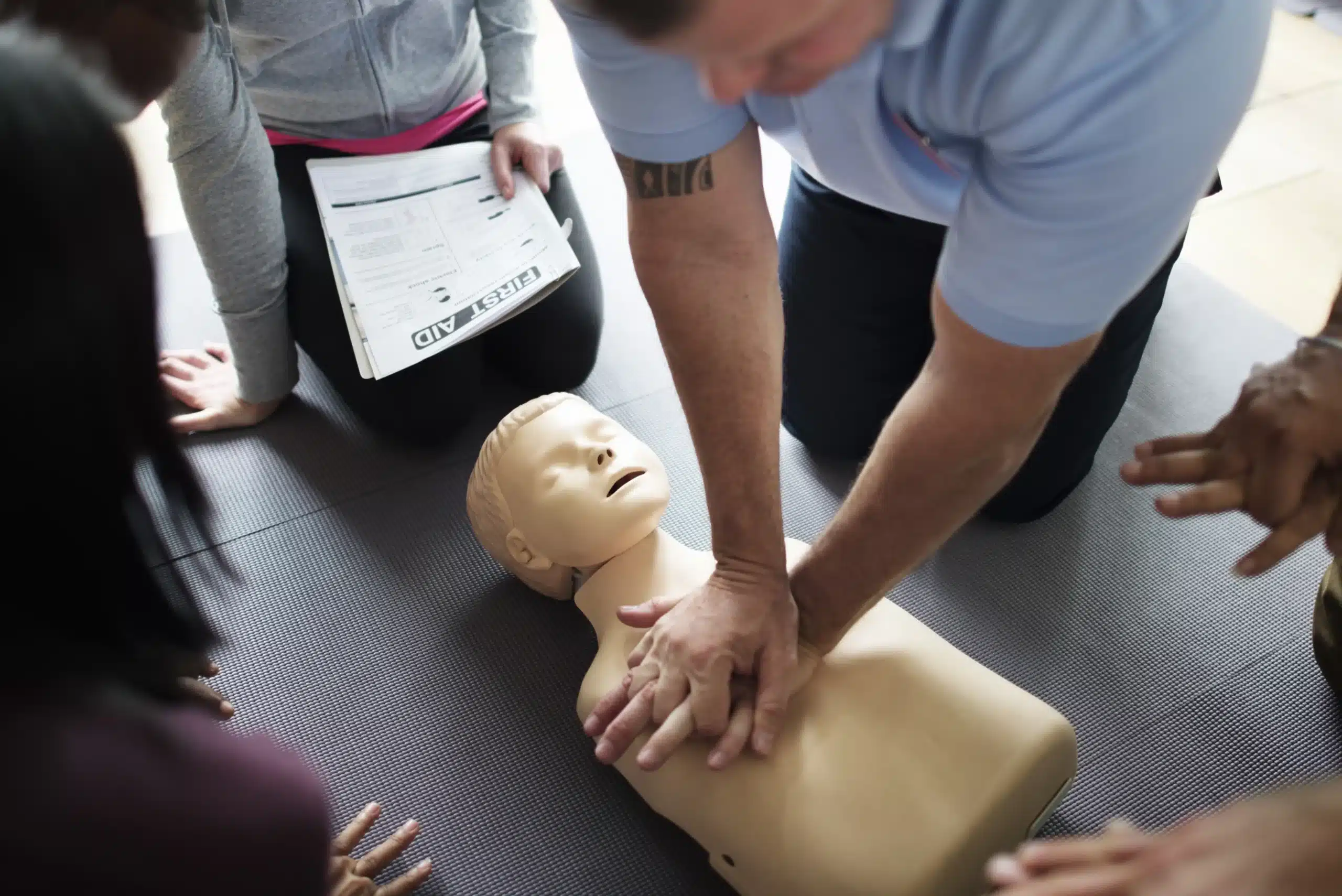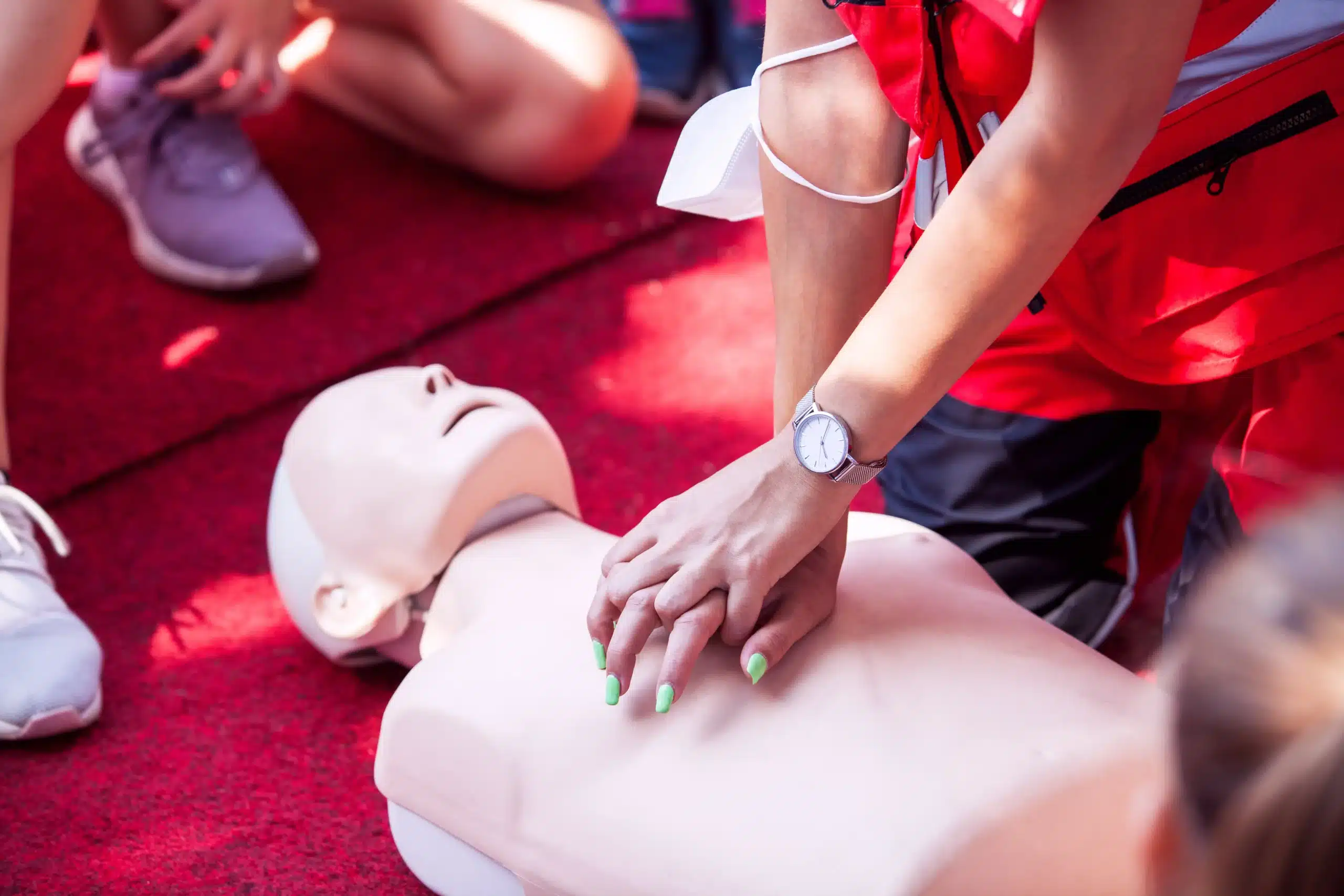Equipping school staff with CPR skills is a vital investment in student safety. This comprehensive guide explores CPR for school staff in Redwood City, addressing key questions about certification requirements, available training courses, and associated costs. We’ll delve into the specifics of local regulations, district policies, and essential certifications for educators in Redwood City. We’ll also discuss flexible training options, financial assistance programs, and strategies for maximizing the impact of CPR training in schools. Whether you’re an educator, administrator, or parent, this guide provides valuable insights into creating a safer school environment.
Key Takeaways
- CPR certification is a must for school staff: Many Redwood City school districts require teachers to be CPR certified, especially those working with young children. Check with your district for specific requirements.
- CPR training can fit any schedule: Blended learning, online courses, and innovative programs like RQI offer flexible options for busy educators.
- Support is available for schools: Resources like group discounts, on-site training, and financial aid can help schools prioritize CPR training and create a safer learning environment.
What are CPR Certification Requirements for School Staff in Redwood City?
Knowing CPR can save lives, especially in schools. This section clarifies CPR certification requirements for school staff in Redwood City, helping educators prepare for emergencies.
Local Regulations and District Policies
CPR certification requirements for teachers in California are often determined at the school district level. While the state doesn’t mandate CPR training for all school staff, many districts understand the value of trained personnel. Check with your specific Redwood City school district for their requirements. Most California school districts require teachers, especially those working with young children or in specialized roles, to have CPR and First Aid certification. This creates a safer environment for students and provides peace of mind for everyone. For a clearer understanding of your district’s policy, contact your school’s administration or human resources department.
Essential Certifications for Educators
Educators in Redwood City typically pursue certifications aligned with American Heart Association (AHA) guidelines. These certifications cover essential skills, including adult, child, and infant CPR; using an AED; and basic first aid for common injuries. Redwood City CPR Classes offers various AHA-aligned courses, including BLS, ACLS, and PALS, for different skill levels. These courses equip educators with the knowledge and skills to respond effectively in emergencies. CPR certifications are usually valid for two years. While renewal isn’t mandatory for California teaching licenses, many school districts require it to maintain a safe and prepared school environment. Staying up-to-date ensures your skills remain sharp and you can confidently handle emergencies.
What CPR Training Courses are Available for Educators?
Educators play a vital role in ensuring student safety. Equipping teachers and staff with CPR and first-aid skills is crucial for responding effectively to emergencies. Several CPR training courses cater specifically to educators, covering various life-saving techniques. Let’s explore some of the key courses available:
Basic Life Support (BLS)
Basic Life Support (BLS) courses are fundamental for educators. These courses equip school staff with the skills to recognize life-threatening emergencies, like cardiac arrest and respiratory distress. Participants learn how to perform CPR, use an AED, and relieve choking. Redwood City CPR Classes offers BLS courses tailored for school staff, ensuring they can confidently handle such situations. These courses adhere to American Heart Association guidelines, providing educators with up-to-date training.
Pediatric Advanced Life Support (PALS)
For educators working with infants and children, Pediatric Advanced Life Support (PALS) training is essential. This specialized course focuses on the distinct physiological and developmental needs of younger patients. PALS certification teaches educators how to assess and manage respiratory emergencies, cardiac arrest, and other pediatric emergencies. It emphasizes team dynamics and effective communication during critical situations, empowering educators to provide the best possible care for children in distress. For more information, check out our CPR Certification in Redwood City guide.
First Aid and CPR Combination Courses
Combining First Aid and CPR training offers comprehensive preparedness for educators. These courses cover a broader range of emergency situations, from treating minor injuries like cuts and burns to managing life-threatening conditions. First Aid and CPR combination courses often include certification by the American Heart Association, ensuring educators receive high-quality, standardized training. This comprehensive approach equips school staff to handle various emergencies, fostering a safer environment for students and colleagues. You can find more information on CPR training for Redwood City educators on our blog.
Where Can Educators Find Top CPR Training in Redwood City?
Finding the right CPR training can feel overwhelming, but several excellent providers serve Redwood City and the surrounding areas. Here’s a rundown of some top options:
Redwood City CPR Classes
Redwood City CPR Classes offers a range of American Heart Association courses, including BLS, ACLS, and PALS certifications. They focus on providing comprehensive training for healthcare providers, educators, and the general public. For educators looking for group discounts, Redwood City CPR Classes has special rates to make training more accessible. Learn more about their BLS certification course.
Safety Training Seminars
Safety Training Seminars is another solid option for AHA-certified courses in Redwood City. They offer various certifications, including CPR, BLS, ACLS, PALS, and First Aid. This nationally recognized certification ensures high-quality training that meets industry standards.
Emergency & Health Training Center
If you need same-day CPR/AED and First Aid certification, the Emergency & Health Training Center is a good choice. They offer classes in Redwood City with certification valid for two years, issued by the Health and Safety Institute (HSI). Explore their course offerings to find the right fit.
Heart Start CPR
Heart Start CPR focuses on CPR training specifically for teachers in California. They understand the importance of preparedness in the classroom and offer both in-person and online options. They even provide convenient on-site training for schools.
In-Home CPR
For busy educators, In-Home CPR brings the training to you. They offer first aid, CPR, and advanced life support (ACLS/BLS) certification classes at your home or business in Redwood City. This flexible approach eliminates the need for commuting and allows you to schedule training around your busy schedule.
How Much Does CPR Training Cost, and is Financial Assistance Available?
Knowing the cost of CPR training and available financial assistance options can help you budget effectively. Let’s break down the typical expenses and explore ways to make training more affordable.
Average Pricing for CPR Courses
CPR training costs vary based on the level of certification, course format (online, blended, or in-person), and the training provider. Basic Life Support (BLS certification), often required for educators and other professionals, typically ranges from $70 to $90. More advanced certifications like ACLS (Advanced Cardiovascular Life Support) and PALS (Pediatric Advanced Life Support) for healthcare providers usually cost between $150 and $200. Redwood City offers a range of CPR and first-aid courses, from basic life support (BLS) for the community to advanced certifications like ACLS and PALS for healthcare providers. Many providers offer flexible schedules, online registration, and blended learning formats that combine online coursework with in-person skills practice.
Group Discounts for School Staff
Many CPR training providers offer discounts for groups, which can significantly reduce the cost per person. This is particularly helpful for schools looking to certify their entire staff. Group discounts are often available for school staff, parent groups, or community organizations. Schools can motivate teachers to pursue CPR training by offering incentives such as professional development credits or small rewards. Reach out to training centers like Redwood City CPR Classes to inquire about group rates and tailor a program to fit your school’s needs and budget. They even offer a low price guarantee.
Financial Aid and Incentives
While less common than group discounts, some organizations and training centers may offer financial aid or incentives to help cover the cost of CPR training. These could include scholarships, grants, or payment plans. It’s always worth asking your chosen provider about potential financial assistance programs. Additionally, some employers may reimburse employees for the cost of CPR training, especially if it’s a job requirement. Check with your school’s administration or human resources department to see if this is an option. For accessible and high-quality training in Redwood City, Menlo Park, and surrounding areas, consider providers like Palo Alto CPR Classes, which offer flexible scheduling options for their RQI courses. For nationally recognized, AHA-certified courses in Redwood City, including CPR, BLS, ACLS, PALS, and First Aid, check out Safety Training Seminars. This ensures high-quality training that meets industry standards.
What Flexible CPR Training Options Exist for Busy Educators?
Juggling lesson plans, grading, and extracurricular activities leaves little room for extra training. Thankfully, CPR training providers recognize the time constraints educators face and offer flexible options to fit your busy schedule. Let’s explore some of the ways you can get certified without sacrificing valuable time.
RQI Program: A Modern Approach
The RQI program, offered by Redwood City CPR Classes, provides a modern and efficient way to obtain your CPR certification. This innovative program blends online learning with short, frequent skills sessions. You can work through the theoretical part of the course online, at your own pace and on your own schedule. Then, you’ll reinforce those skills with brief, regular in-person practice sessions. This approach ensures you maintain up-to-date knowledge and practical skills without large time commitments. Learn more about how the RQI program can work for you.
On-Site Training at Schools
Minimize disruption to the school day by bringing the training directly to you. Providers like In Home CPR offer on-site CPR, First Aid, and BLS certification courses at your school. This convenient option allows staff to train together in a familiar environment, eliminating travel time and minimizing the impact on daily schedules. Contact Redwood City CPR Classes to discuss group discounts and scheduling a session at your school. They also offer a low price guarantee.
Online and Blended Learning Options
Many CPR training providers understand the need for flexibility and offer online and blended learning formats. Blended learning combines online coursework with in-person skills practice. This approach allows you to complete the cognitive portion of the training online, fitting it in during evenings or weekends. You’ll then schedule a shorter in-person session to demonstrate your skills and receive your certification. Explore the CPR training options available in Redwood City to find the best fit for your needs.
How Long is CPR Certification Valid, and How is it Renewed?
Knowing the duration of your CPR certification and the renewal process is crucial, especially for educators. Staying current with your training ensures you’re always prepared to respond effectively in emergencies.
Duration of Certification
CPR certifications are typically valid for two years, similar to certifications from organizations like the American Heart Association (AHA) and the American Red Cross. Maintaining a current certification is essential for Redwood City educators to comply with district regulations and prioritize student safety. Just like renewing a driver’s license, refreshing your CPR skills is essential for maintaining their effectiveness.
Steps to Renew Your CPR Certification
Renewing your CPR certification is a straightforward process. Many providers offer convenient online renewal courses, giving you the flexibility to update your skills at your own pace. Some organizations may require in-person training for hands-on practice. It’s always a good idea to check with your school district or employer for specific renewal guidelines. Redwood City CPR Classes offers various renewal options, including the RQI program, designed to streamline the process for medical professionals maintaining their AHA certifications, such as BLS, ACLS, and PALS. For those who prefer a more traditional approach, providers like Heart Start CPR offer a range of renewal courses designed for educators in California. Regardless of your preferred method, renewing your certification is a simple yet vital step in ensuring you’re prepared and confident in emergency situations.
How Can Schools Maximize the Impact of CPR Training?
CPR training is a vital investment for any school, but simply having staff certified isn’t enough. To truly maximize its impact, schools need a strategic approach to CPR training. This involves focusing on student safety, building staff confidence, and integrating CPR skills into broader emergency plans.
Improve Student Safety
Having trained staff readily available to respond to emergencies significantly improves student safety. CPR and first-aid certification equips teachers and other school personnel with the skills to react quickly and effectively in life-threatening situations. This preparedness can be crucial in critical moments, offering immediate assistance until professional medical help arrives. A swift response can minimize the severity of injuries and potentially save lives.
Build Confidence in Emergency Situations
One of the biggest hurdles to effective CPR is hesitation due to a lack of confidence. Schools can encourage teachers to participate in CPR training by offering incentives like professional development credits or small rewards. Regular refresher courses and practice drills are even more effective for building confidence among staff, ensuring they feel prepared and capable of handling real emergencies. When staff members trust their skills, they’re more likely to act decisively and correctly under pressure. For more insights on addressing challenges in CPR training, check out this helpful resource.
Integrate CPR Skills into School Emergency Plans
CPR training shouldn’t be a standalone activity. Integrating it into the school’s overall emergency plan is crucial. This involves regular drills and simulations, involving staff at all levels. These exercises reinforce learned skills and familiarize staff with the school’s specific emergency procedures. Redwood City’s Enhanced School Safety Plan offers a valuable example of how schools can integrate CPR training into a broader emergency response framework. By practicing CPR within this context, schools create a more prepared and effective safety net for their students.
How Can Schools Overcome Challenges in CPR Training for Staff?
Getting your staff CPR certified can feel like a challenge. Between busy schedules, tight budgets, and competing priorities, training can easily fall by the wayside. But ensuring your staff knows how to respond to emergencies is critical, especially when working with children. Here’s how schools can address common roadblocks and make CPR training more accessible:
Address Time Constraints
One of the biggest hurdles is finding time in already packed schedules. Think about offering incentives like professional development credits or small gift cards to acknowledge the time commitment. Even providing lunch during the training can make a difference. Explore scheduling shorter, more frequent training sessions or offering on-site training to minimize travel time. For schools looking to train multiple staff members, Redwood City CPR Classes offers group discounts.
Raise Awareness and Motivation
Sometimes, the challenge isn’t logistics—it’s motivation. Help your staff understand the importance of CPR training by highlighting real-life stories and emphasizing how these skills can be used at school, at home, and in the community. CPR and first-aid certification empowers individuals to respond effectively to emergencies, giving them the confidence to act when needed. Consider inviting a guest speaker to share their personal experience with CPR or showcasing the positive impact of trained staff in past emergencies.
Use Modern Training Equipment
Traditional CPR training can be lengthy and inconvenient. Modern methods, like the RQI program, offer a more flexible approach, combining online learning with short, frequent skills sessions. This blended learning model allows staff to complete the online portion at their own pace and then attend a brief, in-person skills session. Using updated equipment and technology can also make the training more engaging and effective.
What Resources and Support are Available for School Staff CPR Certification?
Thankfully, several resources and types of support are available to help Redwood City school staff get CPR certified and maintain their skills. From online refreshers to hands-on practice and local support networks, busy educators have options to fit their needs.
Online Refresher Courses
Staying up-to-date on the latest CPR techniques is crucial. Online refresher courses offer a convenient way to do this. The RQI program, offered in Redwood City, provides a modern approach by combining online learning with short, frequent skills sessions. This blended learning format lets school staff learn at their own pace and refresh their knowledge without attending lengthy in-person classes. You can learn more about the RQI program and how it streamlines CPR certification at Redwood City CPR Classes.
Hands-On Practice Opportunities
While online learning is valuable, hands-on practice is essential for mastering CPR skills. Redwood City CPR Classes provides practical training with mannequins and AEDs, giving school staff realistic experience in a supportive environment. This type of training builds confidence and ensures educators are prepared to respond effectively in real-life emergencies. Many CPR training providers understand the demands on educators’ time and offer flexible scheduling and convenient online registration. For a complete guide to CPR classes in Redwood City, including information on hands-on practice opportunities, check out this blog post.
Local Support Networks
Connecting with local organizations and training centers offers valuable support for school staff pursuing CPR certification. Several reputable providers in Redwood City offer comprehensive training programs. Safety Training Seminars offers a range of American Heart Association (AHA)-certified courses, including CPR, BLS, ACLS, PALS, and First Aid. This nationally recognized certification ensures school staff receive high-quality training that meets industry standards. In-Home CPR offers another convenient option, bringing CPR, First Aid, and BLS certification courses directly to your school in Redwood City. This on-site training minimizes disruption to school schedules and makes it easier for staff to participate. You can explore more CPR training options in Redwood City in this helpful guide.
Related Articles
- CPR Certification in Redwood City: A Complete Guide
- Find CPR Certification Near Me: A Practical Guide – Redwood City CPR Classes
- CPR Renewal in Redwood City: Your Easy Guide – Redwood City CPR Classes
- CPR Training in Menlo Park: Your Complete Guide – Redwood City CPR Classes
- Your Guide to Pediatric Advanced Life Support (PALS) in Redwood City – Redwood City CPR Classes
Frequently Asked Questions
Is CPR certification required for all school staff in Redwood City?
California doesn’t have a statewide mandate for CPR certification for all school staff. Requirements are usually determined at the school district level. It’s best to check with your specific Redwood City school district or school administration for their policies. Many districts encourage or require CPR certification, especially for those working directly with children.
What type of CPR training is recommended for educators?
The American Heart Association (AHA) offers widely recognized and accepted CPR certifications. BLS (Basic Life Support) certification is generally recommended for all educators. Those working with infants and children should also consider PALS (Pediatric Advanced Life Support) certification. A combined CPR and First Aid course offers the most comprehensive approach.
Where can I find CPR training in Redwood City?
Several organizations offer CPR training in Redwood City. Redwood City CPR Classes offers various AHA-certified courses, including BLS, ACLS, and PALS. Other options include Safety Training Seminars, the Emergency & Health Training Center, Heart Start CPR, and In-Home CPR. Consider factors like cost, schedule, and course content when choosing a provider.
How much does CPR training cost?
The cost of CPR training varies depending on the provider, the type of certification, and the course format. BLS certification typically ranges from $70 to $90. More advanced certifications like ACLS and PALS usually cost more. Many providers offer group discounts, which can be beneficial for schools. Some employers may also reimburse the cost of training. It’s always a good idea to inquire about potential discounts or financial assistance.
How can busy educators fit CPR training into their schedules?
Many CPR training providers offer flexible options to accommodate busy schedules. Look for blended learning formats that combine online coursework with shorter in-person skills sessions. The RQI program, offered by Redwood City CPR Classes, is a good example of this approach. Some providers also offer on-site training at schools, minimizing disruption to the workday.
